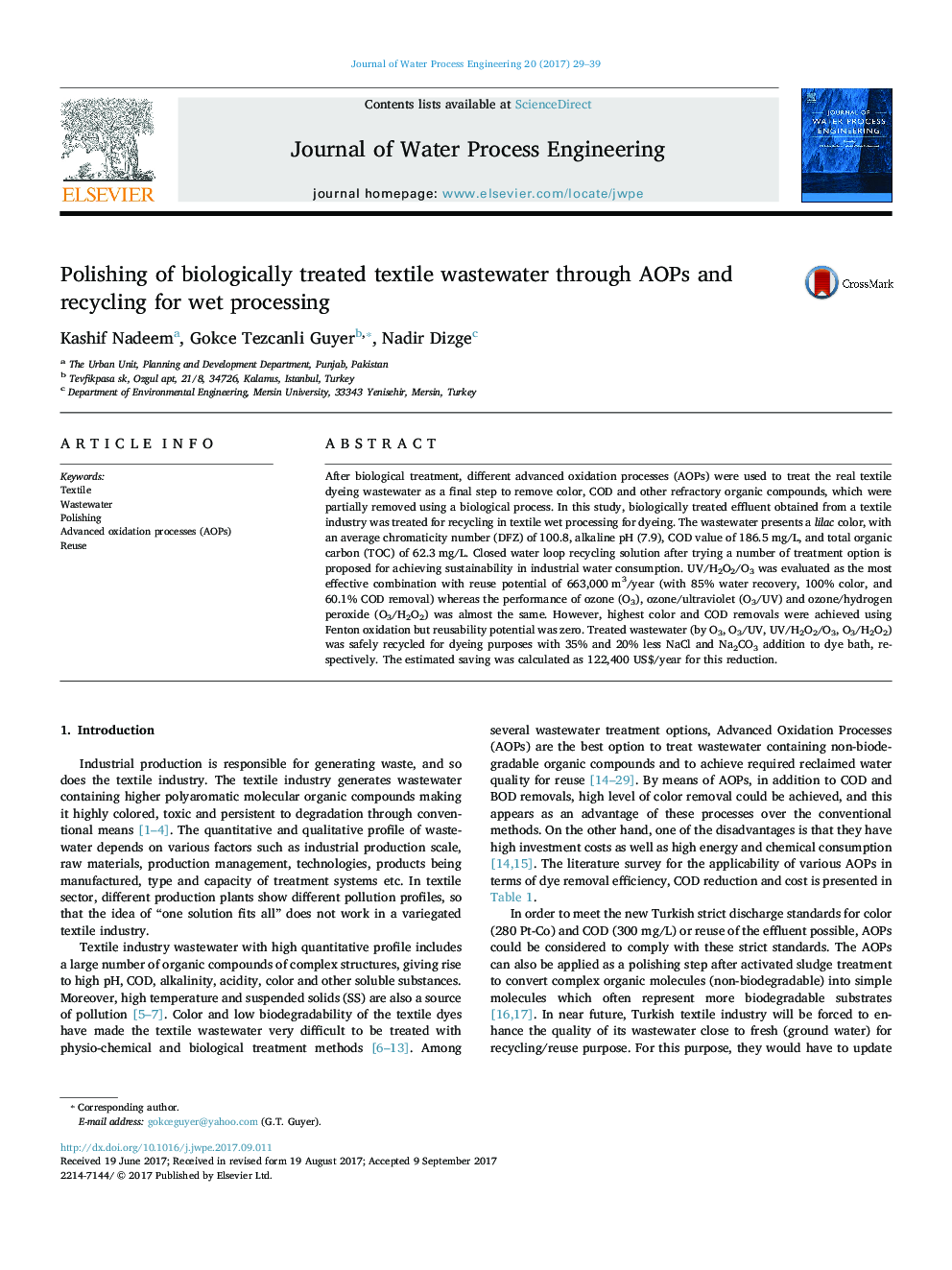| Article ID | Journal | Published Year | Pages | File Type |
|---|---|---|---|---|
| 4909873 | Journal of Water Process Engineering | 2017 | 11 Pages |
Abstract
After biological treatment, different advanced oxidation processes (AOPs) were used to treat the real textile dyeing wastewater as a final step to remove color, COD and other refractory organic compounds, which were partially removed using a biological process. In this study, biologically treated effluent obtained from a textile industry was treated for recycling in textile wet processing for dyeing. The wastewater presents a lilac color, with an average chromaticity number (DFZ) of 100.8, alkaline pH (7.9), COD value of 186.5Â mg/L, and total organic carbon (TOC) of 62.3Â mg/L. Closed water loop recycling solution after trying a number of treatment option is proposed for achieving sustainability in industrial water consumption. UV/H2O2/O3 was evaluated as the most effective combination with reuse potential of 663,000Â m3/year (with 85% water recovery, 100% color, and 60.1% COD removal) whereas the performance of ozone (O3), ozone/ultraviolet (O3/UV) and ozone/hydrogen peroxide (O3/H2O2) was almost the same. However, highest color and COD removals were achieved using Fenton oxidation but reusability potential was zero. Treated wastewater (by O3, O3/UV, UV/H2O2/O3, O3/H2O2) was safely recycled for dyeing purposes with 35% and 20% less NaCl and Na2CO3 addition to dye bath, respectively. The estimated saving was calculated as 122,400 US$/year for this reduction.
Related Topics
Physical Sciences and Engineering
Chemical Engineering
Chemical Engineering (General)
Authors
Kashif Nadeem, Gokce Tezcanli Guyer, Nadir Dizge,
